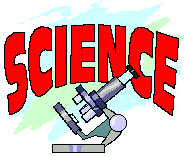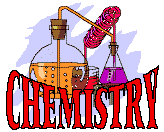

Welcome to the wonderful world of Science!




This is what we will be working on this year:
| Science skills - Observing, Organizing Information, classifying, sequencing, concept mapping, making and using tables and graphs, measuring, comparing and contrasting, cause and effect, forming operational definitions measuring in SI, forming a hypothesis, designing experiments and projects to test a hypothesis, separation and controlling variables, interpreting data, communicating, inferring, relating, making generalizations, applying, evaluating information, problem solving, decision making, inquiry, making models, predicting, sampling and estimating |
 Life
Science - Describing the Living World, Viruses and Simple Organisms, Animal Life,
Plant life, Ecology, changing Ecosystems, *Structure and function of living systems,
reproduction and heredity, regulation of behavior, populations and ecosystems, diversity
and adaptations of organisms. Life
Science - Describing the Living World, Viruses and Simple Organisms, Animal Life,
Plant life, Ecology, changing Ecosystems, *Structure and function of living systems,
reproduction and heredity, regulation of behavior, populations and ecosystems, diversity
and adaptations of organisms. |
 Earth
Science - Viewing the earth and sky, moving water, shaping the land, earthquakes and
volcanoes, the Earth-Moon system, *structure of the earth, earth's history, earth in the
Solar System Earth
Science - Viewing the earth and sky, moving water, shaping the land, earthquakes and
volcanoes, the Earth-Moon system, *structure of the earth, earth's history, earth in the
Solar System |
 Chemistry
-Describing the Physical world, Matter in Solution, Acid, Bases and Salts. Chemistry
-Describing the Physical world, Matter in Solution, Acid, Bases and Salts. |
 Science
and Technology - *Abilities of Technological design, understanding about Science and
Technology Science
and Technology - *Abilities of Technological design, understanding about Science and
Technology |
| Science in Personal and Social Perspectives - *Personal health, Populations, resources and environments, natural hazards, risks and benefits, Ethics and Science and technology in Society, careers in Science |
| Unifying Concepts and Processes -*systems, order and organization, Evidence, models and explanation, change constancy and measurement, Evolution and equilibrium |
| Science as Inquiry - *Science abilities , understandings about Scientific inquiry |
| History and Nature of Science -*Science as Human Endeavor, nature of Science, History of Science |
* Program Supports the National Science Education Standards, Sunshine State Standards of the Florida Dept. of Ed., Project 2061 of The American Association for the Advancement of Science


Check the 7th and 8th grade web links too. Be sure to have fun!
